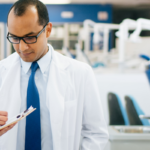Derogatory Comments about Patients and Proper Charting
My mother used to say, “If you can’t say anything nice about someone, don’t say anything at all.” Most of us know to follow the golden rule but sometimes we forget and that can have negative consequences.
During the morning huddle, a staff member might say, “Oh no, (patient’s name) is coming in, he is such a loud mouth, rude jerk”, to which everyone laughs. These remarks should be discouraged for what it is –inappropriate. Patient/customers can “feel” if you like them or not, so you aren’t fooling anyone. By allowing this type of interchange it sets the tone of the office. Your staff will get careless and be heard by the patient or someone that knows the patient.
Worse yet writing these comments in clinical records or somewhere in the clinical paper or computer chart is a huge mistake. If the patient sees the negative comment or someone who knows the patient sees the comment and tells the patient, this could be a loss of a patient and possibly a litigious situation, depending on the comment.
It would be scathing on social media which is where this type of problem often ends up.
If there is ever a time when records are subpoenaed for a court case, the inappropriate comments may bias the legal outcome—not in your favor.
Before we look any further into what is or isn’t appropriate in patient chart notes, let’s look at the reasons that we must have proper chart notes.
Chart notes are like an insurance policy against accusations of wrongdoing such as might happen in an insurance audit or defending treatment provided or not provided in front of a legal entity as in a lawsuit. Good chart notes support the necessity for treatment for billing insurance and for communication with other providers for the care of the patient. Good chart notes support the existence of the diagnosed treatment and the manner of delivery in details. In the world of insurance, “If it is not in the chart—it didn’t happen.”
The minimum information for each patient should include the following:
1. Health History is current and updated each recall or before any treatment(post alerts in the computer for special needs such as Pre-Med for joint replacement or HBP(high blood pressure)
2. Date and details of the examination, not just the word “exam” What were the doctors’ findings.
3. Doctors reasons for requesting which type and number of radiographs (what you need to look at)
4. Diagnosis for each tooth that needs treatment such as #3 MOD Composite restoration(deep caries undermining existing MO amalgam)
5. Date and description of treatment rendered for each tooth separately and length of time necessary to complete the treatment such as 60 minutes for 2 quads SRP.
6. Date and description of any complications encountered(patient reaction to anesthesia)
7. Date and reason for ordering all diagnostic tests and procedures. Objective observations.
8. Date and name, quantity and strength of all drugs or medications prescribed to patient
9. Date of canceled or missed appointments and attempts to reach patient
10. Date of patient refusal of treatment and reason or date of patient accepting treatment
11. Details of next recommended treatment appointment and time necessary to treat to completion
Dental Billing Tips and News for Pros; Edition #134







0 Comments